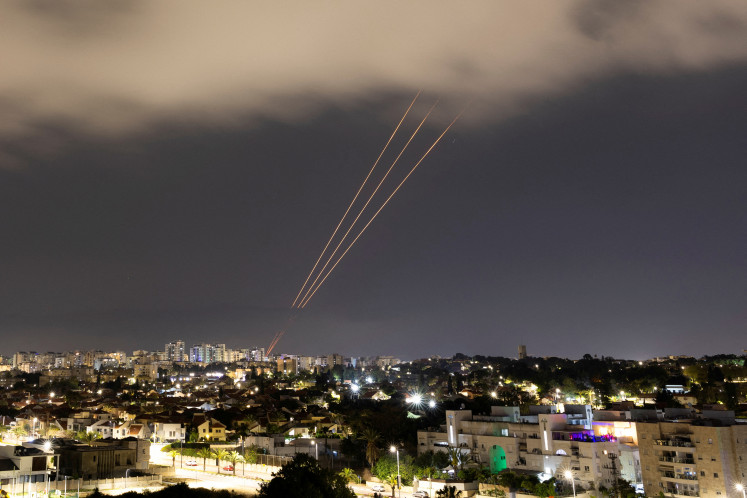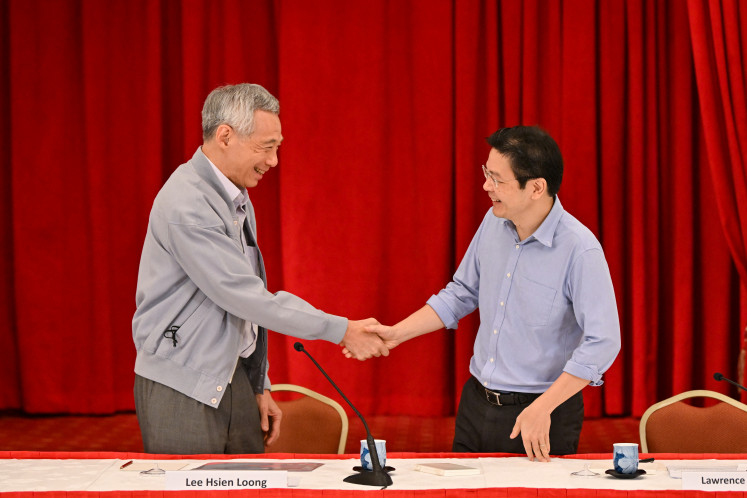Rice production slows amid budget cuts
Reduced income directly affect the achievability of targets, at least when it comes to the rice-cultivation development program
Change Size

R
educed income directly affect the achievability of targets, at least when it comes to the rice-cultivation development program. A 13.4 percent cut in the state’s budget allocation for the Agriculture Ministry has led to a lower rice production target for this year.
The Agriculture Ministry set a sober target of just 1.1 percent for the increase in rice production this year to around 80 million tons, after claiming to have jacked up production by 4.9 percent last year.
The ministry has blamed its lower budget for the lower target and assumes the reduction of its allocation to Rp 23.9 trillion (US$1.79 billion) this year from Rp 27.6 trillion in 2016 will result in a down-sizing of fiscal assistance for rice fields.
However, the smaller budget and lower production growth estimate did not stop Agriculture Minister Amran Sulaiman from raising the bar for the country’s rice productivity. He was even hopeful that it would be unnecessary for the nation to import rice this year.
“We exceeded the national mid-term strategic plan [RPJM] last year; we sure will do so again this year. I know there’s a budget cut this year, but we’ll make it somehow,” he said on the sidelines of a meeting with the House of Representatives last Thursday.
The budget cut specifically affects the ministry’s rice-cultivation development program, where farmers receive subsidized seeds, but not the fertilizer subsidy program, for which the government has a separate budget of Rp 31.1 trillion this year.
The ministry sees a lower participation in the rice field development program to 1.37 million hectares in 2017 from 2.19 million ha in 2016. Meanwhile, only 80,000 hectares of new rice fields will be in borders areas, down from 128,441 ha last year.
Amran explained the smaller budget would not affect supporting infrastructure for agriculture, as essential facilities for irrigation and water deposits, such as retention basins, had been constructed earlier.
Some 3 million ha of rice field have been irrigated and more than 1,714 water deposits have been created over the past two years, according to him. Thus, the Agriculture Ministry will only need to build an additional 500 water deposits in 2017, while the Village, Disadvantaged Regions and Transmigration Ministry will build 30,000 others.
With the targeted 80 million tons of rice, the government hopes to curb rice imports and to export organic rice to neighboring countries like Papua New Guinea, Malaysia and the Philippines.
“We’ve been exporting organic rice to nearby neighbors through borders areas. We’ve been having organic village programs so farmers can sell and even export organic products that have a higher value,” the minister said.
The ministry aims to increase organic rice exports to 5,000 tons from 2,506 tons in 2016, which is already a significant increase from 1,744 tons exported in 2014. Amran repeatedly praised the fact that no new rice import recommendation was issued last year.
Central Statistics Agency (BPS) data show that realized rice imports for the January to November 2016 period surged by 110.7 percent to 1.2 million tons, but this was the realization of import permits issued in 2015.
Bogor Institute of Agriculture (IPB) economist Dwi Andreas said rice production had indeed increased in 2016, given the stable price in the market.
“It’s hard to rely on the government data, because it’s been inaccurate for years. But for last year, just look at the market price. It was stable, which means production was indeed good, adding to the 1.2 million tons of imports,” he said over the phone.
Indonesia’s annual demand for rice has reached 36 million tons, equal to 60 million tons of rice. The government claims national production amounted exceeded 70 million tons of rice in recent years, raising questions about the accuracy of its data.
Lawmakers from the House of Representatives’ Commission IV, which oversees agriculture, forestry and fisheries, count on the ministry to realize the target but noted many technical problems in the rice field expansion.
“We need to have the ministry evaluate and make proper planning,” said Herman Khaeron, vice chairman of Commission IV.









